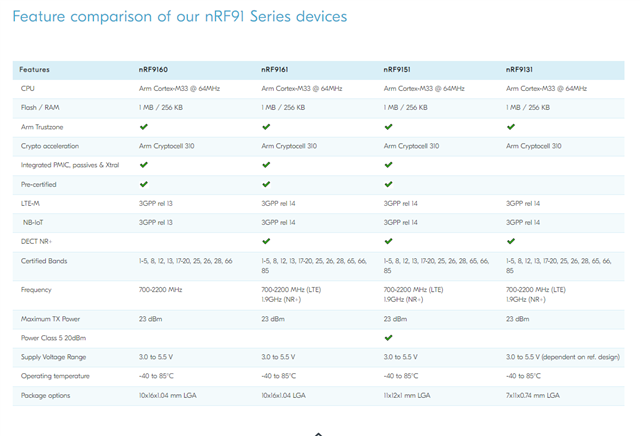We are starting a new design that requires a LTE-M chip. Upon comparing features between nRF9160 and nRF9161, I see 2 differences
- DECT NR+
- 3GPP Release 14
First question: Is there any other difference between the 2 chips?
Second question: Can you elaborate on the 3GPP advantages of nRF9161?
Product specification document of nRF9160 lists following about its 3GPP compliancy
- 3GPP LTE release 13 Cat-M1 and Cat-NB1 compliant
- 3GPP release 13 coverage enhancement
- 3GPP LTE release 14 Cat-NB2 compliant
Product specification document of nRF9161 lists following about its 3GPP compliancy
- 3GPP LTE release 14 Cat-M1 compliant
- 3GPP LTE release 14 Cat-NB1 and Cat-NB2 compliant


